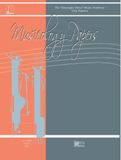Musical Theory and Practice in South-Eastern Europe and Mesopotamia, in the Light of the Ancient Culture and Folklore. A Comparative Study
Musical Theory and Practice in South-Eastern Europe and Mesopotamia, in the Light of the Ancient Culture and Folklore. A Comparative Study
Author(s): Ghircoiasiu RomeoSubject(s): Music
Published by: MediaMusica
Keywords: Keywords: ancient Greek music, Babylonian system of modes, metabole, tritonic type
Summary/Abstract: One of the most ancient elements of the theoretical thought in South-Eastern Europe is related to the kithara, which, according to Nichomakos, until the time of Orpheus had four strings, tuned D – G – A – D. The tuning system of the ancient guitar was of a tritonic type, this being the second stage in the history of melody. This tonal frame represented an important moment in the evolution of the future principal system of ancient Greece. Apart from this system, musical practice imposed the introduction of a new system in the theory, based on the complexity of melodies and of their modulations. This new system was the Systema elatton. The procedure of passing from one system to another is based on a metabole, i.e. the changing of H with B. The paper provides a detailed presentation of these aspects for the purpose of a comparative study between the South-Eastern European and the Mesopotamian musical cultures, and is illustrated with examples from different geographical areas and historical periods. It is concluded that there are a great deal of relations between Europe and Asia, in both directions. Although certain Mesopotamian elements have been identified in the Greek theory, we cannot neglect the great, complex and logical construction of this latter musical thought.
Journal: Lucrări de Muzicologie
- Issue Year: 2014
- Issue No: 1
- Page Range: 81-91
- Page Count: 11
- Language: English
- Content File-PDF

